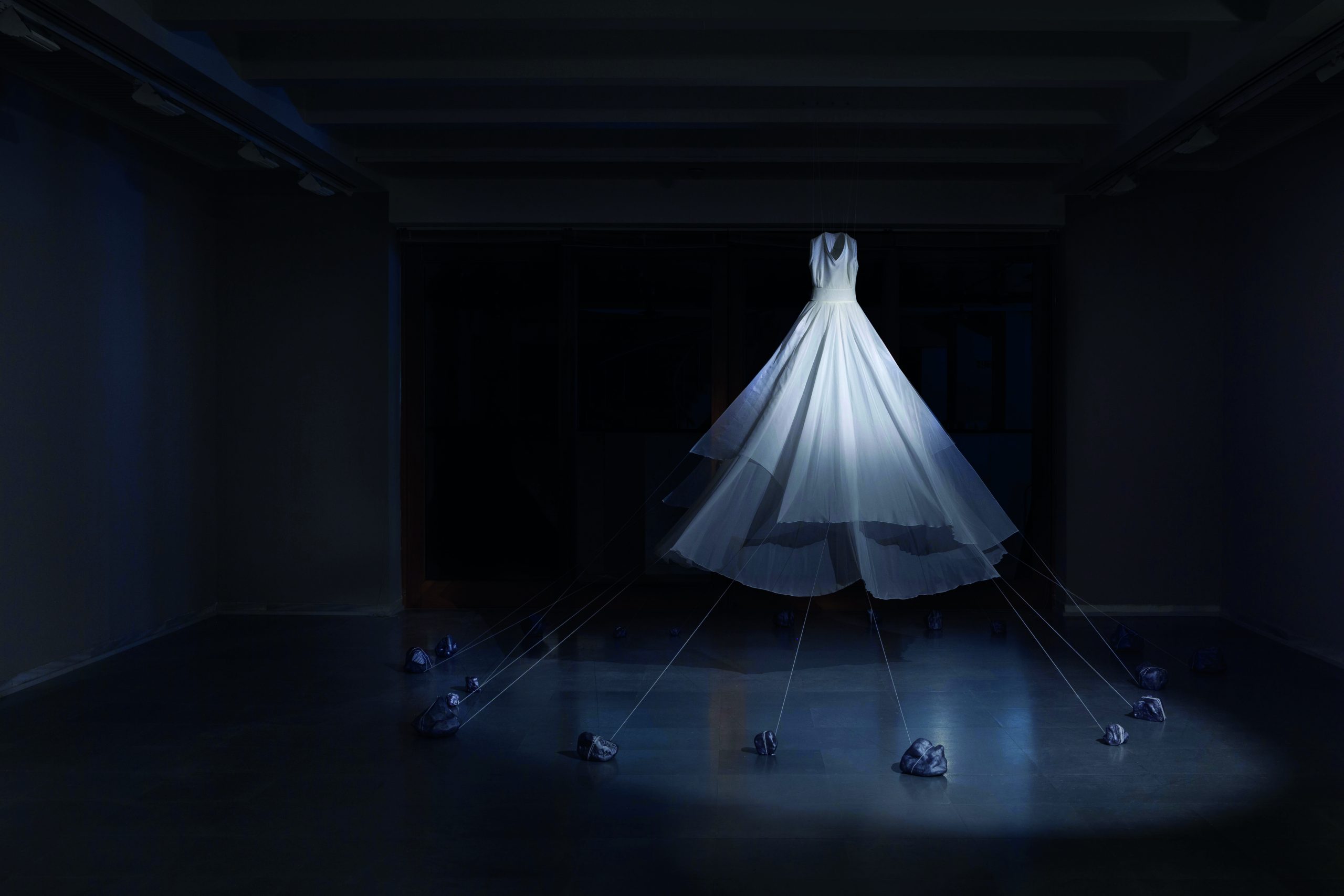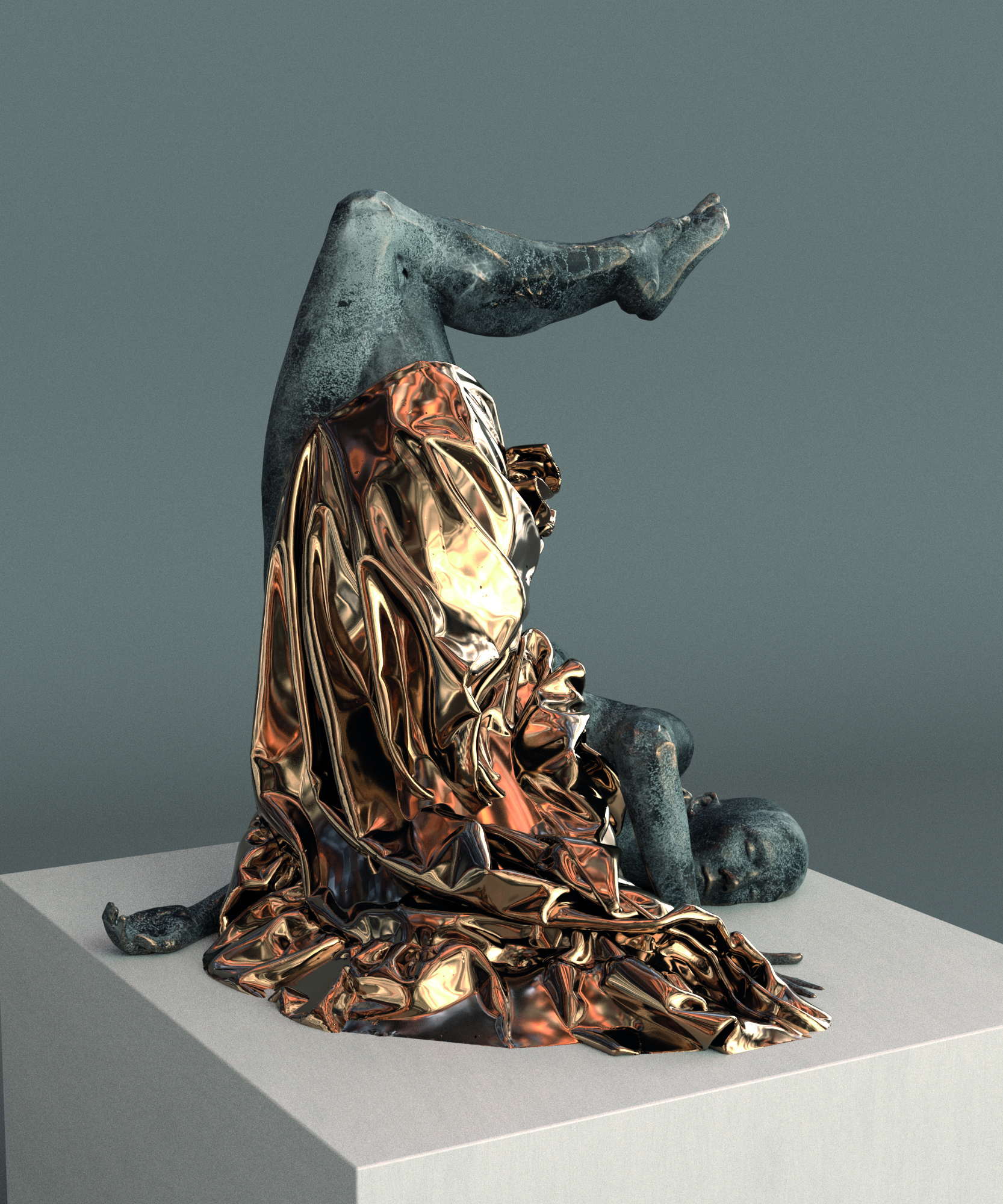Ilgaz’s artworks deal with socio-political, individual and contemporary issues in a range of interdisciplinary productions from the 1990s to the present, Together, they bring today’s chaotic problems up for discussion from various viewpoints. “Breaking Point,” an exhibition by Gul Ilgaz, can be viewed at the Millî Reasürans Art Gallery until January 23, 2021.
-
Could you please tell us about your inspiration for the exhibition at Milli Reasürans Art Gallery, and how you determined the title “The Breaking Point”?
My first solo exhibition at Milli Reasürans Art Gallery in 2009 was titled, “Partly Cloudy”, and my second solo exhibition at the Daire Art Gallery in 2011 was titled “Before It Gets Dark …”. They were all related to the atmosphere and the environment we were living in which was not pointing in a good direction. In this holistic exhibition; I can observe many turning points during my 30 years of artistic production. On the other hand the other hand I hope that it will be a breaking point, towards changing this negative course within the geography and world we live in. Such breaking points happened, even during this exhibition process, including the Covid-19 outbreak, the Black Lives Matter protests in the United States, the US elections, and the days of trying to heal the wounds inflicted by the Izmir earthquake. It is obvious that there will be many more [disasters] both in our personal lives and in the world, during and after the exhibition.
-
We have been following your productions that emerged from an interdisciplinary framework since the 1990s. Could you tell us about the formal and conceptual aspects of your exhibition “Breaking Point”, which is spread over two floors at the Millî Reasürans Art Gallery?
The exhibition consists of two parts. On the ground floor of the gallery is a “Biography Wall,”as I call it, on which a selection of my past works are presented and a screening of my video works welcome the audience. With presentation, like this, I intended to visualize the artist biography written on the catalogue pages and associate it with the new exhibition.
Additionally, it ensures that the works I have done based on the breaking points I have experienced as an artist can be observed by the audience as a whole. The works in my new exhibition, which is in the main space of the gallery, consist of different materials. Spatial installations, videos and a sound arrangements accompany the photographs, all of which exist in the space in a way that complements each other. These new works of mine also take their references from my past works. I believe that by being able to observe how the materials, signs and images used by the artist have evolved, the audience has a solid approach to comprehend an exhibition.

-
So, how did you set up the multi-disciplinary selection of the exhibition?
I worked for this exhibition for more than a year. The choice of material came out of the content of the work. While installing the exhibition, I paid attention so as not to fill the space too much due to the great size of the works. I did not think much about the exhibition while the works were being made. But I did go through a strict planning and dimensioning process for the works during the production phase. By doing this, I made sure that both the audience and the works would be in a fluent relationship.
-
Can we say that the concept of “I” in your works offers a multidimensional expression to define a socio-cultural and socio-political dilemma?
As a person who was thrown into this world and fell into a certain geography, I have been exposed to the effects of the environment-family-friends-society, and politics-like every individual. When I concentrate on these effects and ask questions about them within a specific time period, my works begin to appear. Our body, which is the recipient of our perceptions, thoughts, and feelings, is also the recorder of happenings. In my opinion, while embodying these influences, pointing out social and political situations simultaneously seems to be a non patronizing language.
-
In the main space of the exhibition, we see an installation of a tulle dress with a skirt that is stretched by several pieces of stone. You are making use of a delicate material, tulle, along with a rigid substance, stone. Beside it, a rope acts as a stake, bringing these two materials together. From this perspective, what was the starting point of this installation of an innocent white tulle dress being pulled by the stones surrounding it?
This work came out of a very personal experience. The white dress is a metaphor for my mother, who lived the last 11 years of her life in a precoma, dependent on machines. The dress is tied up by ropes and tied down by stones. It exists in an in-between, hanging in the air; it can neither go nor stay. Being in purgatory is a concept that I have been carrying all along. Being dependent and being free; these two counter concepts are actually a fundamental contradiction that people constantly find themselves in. Being dependent can easily evolve into captivity, just like being free can become solitude. I think we keep going back and forth between these two poles through various phases of life.

-
Could you tell us about the work with a meditative effect that can be viewed in the main space of the exhibition? The video in which you throw a stone on your shoulder into the sea over and over again…
As you have mentioned, there is a meditative effect throughout the majority of the exhibition. Since there is a repetitive movement, the video, specifically, creates such an effect on the audience. I do not use offensive language or an aggressive tone in my work. I think works can better communicate calmly, without taking the viewer hostage. This video work is related to the white dress. As a result, they are positioned across from each other. Throwing stones into the sea is a ritual of lament in many cultures. A new stone appears on the shoulder after one is thrown, and this movement continues in an endless loop. We are invited to accept this situation, one way or another.
-
In “Breaking Point”, you present details of objects with various functions that can be found in a house. What is the conceptual analysis of these photographs as they are followed in the exhibition?
For the first time, I used audio together with photography in the sound installation called “Domestic Sounds”. There are images of household items in various dimensions which are placed on two walls usually with their own sound. Accompanying them, there is the sound of a person doing daily housework. This work, began when the sound of a nightstand drawer came from my mother’s house to mine. It reminded me of the time I spent in that house in the past. In addition, this sound installation was a practice in indicating the way domestic sounds accompany the feeling of loneliness, and reminding me of the time I spent alone at home.
-
In the exhibition, you have various works that can be viewed as a relationship to your own body. Considering these works in particular, would it be true to say that they are also constructed with a feminist approach as well as defining your body and telling an individual and social narrative?
As I mentioned at the beginning, we are exposed to the influences of the life we live. In this case, there may be situations I find myself in just because I am a woman. I produce works that reveal these situations, but I also produce works that address the problems related to our common subconscious that cannot be separated as a woman or a man. It is a fact that my work is also said to be autobiographical. In my opinion, women artists have a better ability to look at their own life experiences and psychological processes, and show the courage to reveal them explicitly.
-
To conclude, while creating a narrative through your own body, do you think that your identity has become alienated from you? That it is becoming an expression that does not belong to you but to society, and transformed into a language that reflects the social structure?
I frequently use my own body in my work. I do this naturally because I am the best one to know the influence that I want to create. It feels like an inherent act to revive a personal experience through my own body. While doing this, there is also a kind of performance. From time to time, I become a part of, or subject to a theatrical instance that I fictionalize. The works do not remain within themselves. From the moment they meet the audience, their context changes so that they become part of a social context.
It’s not just about me; I am also a translator of the issues related to the world, environment and society I live in. In other words, I feel the impact of the world on my body for a certain period of time, and then I transform these feelings through visual and conceptual images and present them back to the audience. I believe that the autobiographical nature of my work has a quality that is like a historical record of feelings.







